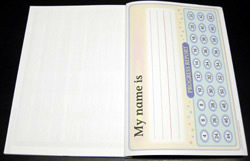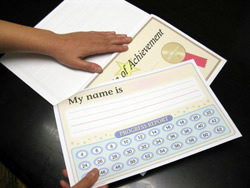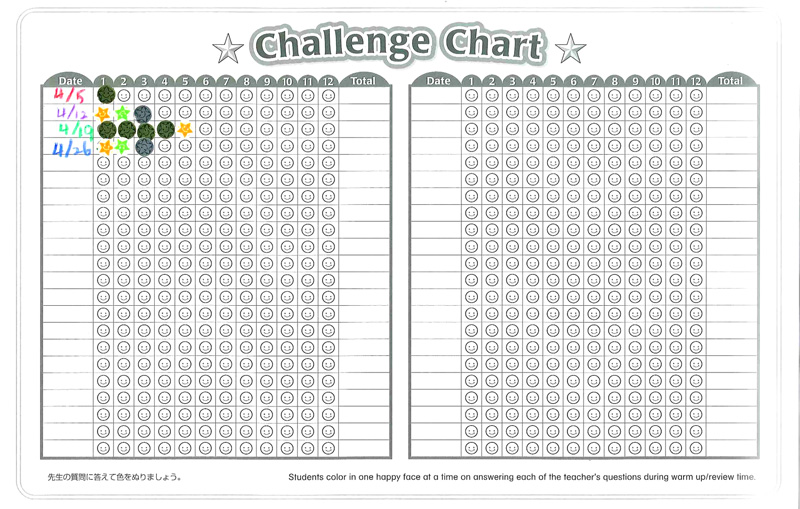Make it a habit to talk in English
From the first grade at elementary school (Learning World Book 1 level after finishing WELCOME books), use a Progress Sheet for a lesson warm up and make it a routine to talk in English. Talk about news, seasonal topics, teacher experience, etc. Use pictures or items to help students to join in the conversation. It is important to participate and speak up even if the students make mistakes. Get them used to speaking in English first and learning from mistakes gradually, then both listening and speaking skills will improve.
Not only “English learned already” but also try using:
・words and expressions that are used in Japan as Japanese English (Katakana-English)
・vocabulary and dialogue that is used for the class (Routine)
・words related to the discussion to improve the conversation.
Private English schools in Japan are required to focus more on “Speaking” these days. Communication skills are important to be developed in the first few years from the first grade.
【Free Talk examples】 (reference: Questions List from Learning World Teachers Book (Except for TOMORROW)】
1.Pick a question from the list.
2.Add questions to expand the student’s response.
T: Where do you live?
S1: I live in Komazawa.
T: Oh, you live in Komazawa. How do you come to school?
S1: I come to school by car.
T(expression of surprise)You come to school by car! Do you drive a car?
S1: No!
T: Then who drives the car?
S1: My mother.
T: Your mother drives the car. I see. By the way, what color is your mother’s car?
3.Ask another student about S1’s response,
and add related questions instead of copying the same answers.
T: Where does S1 live? Does S1 come to school by bicycle?
Can S1 drive a car? Can S1’s mother drive a car?
What color is the car?
4.Instruct them to expand the discussion
and check how many extra sentences were created.
T: What is your father’s name?
S1: His name is Masaaki. He is forty-five years old.
He is a dentist. He can play soccer.
He is a very good soccer player. He has a good child – Me! I like my father.
5.Ask a different student about S1’s response and keep expanding,
if anything is unclear, make them ask S1 for an explanation.
T: What is S1’s father’s name?
S2: I don’t know.
T: Ask S1, please.
S2: What is your father’s name?
S1: His name is Masaaki.
S2: Thank you. S1’s father’s name is Masaaki.
T: Thank you. Is your father’s name is Masaaki?
S1: Yes.
※Make this activity to a routine so students will be more careful to listen. Taking a note will become a habit. It is important to involve everyone in the class.
Progress Sheet and Challenge Chart
Learning World 1,2,3, READY, BRIDGE, TOMORROW contains a Progress Sheet which is found in the back of the student book.

Cut the sheet out before handing the new textbook to the students.

The reverse side of the Progress Sheet is a Challenge Chart.
Color in or put a sticker of a smiley face every time a student answers a question.
※Give an extra one for an extra sentence added to the answer.

Teachers keep the Progress Sheet until the next lesson.
*TOMORROW doesn’t contain a Questions List



















